EN

Do you know what coopers do? Without them, we wouldn't be able to drink Port wine.
Despite being a centuries-old craft (1443 is the date of the first record of coopers' activity in Porto), cooperage is still an unknown profession. During the grape harvest season in the Douro, Agenda Porto met two coopers – two generations – who work with century-old wood in which the world's most famous fortified wine rests. It is through contact with this wood that the wine improves its profile and gains new attributes and aromas.
In the Port Wine industry, the craft consists of repairing and restoring very old wood, an authentic wine heritage. This restoration work is critical because any defect or groove can mean hundreds of litres of wasted wine.
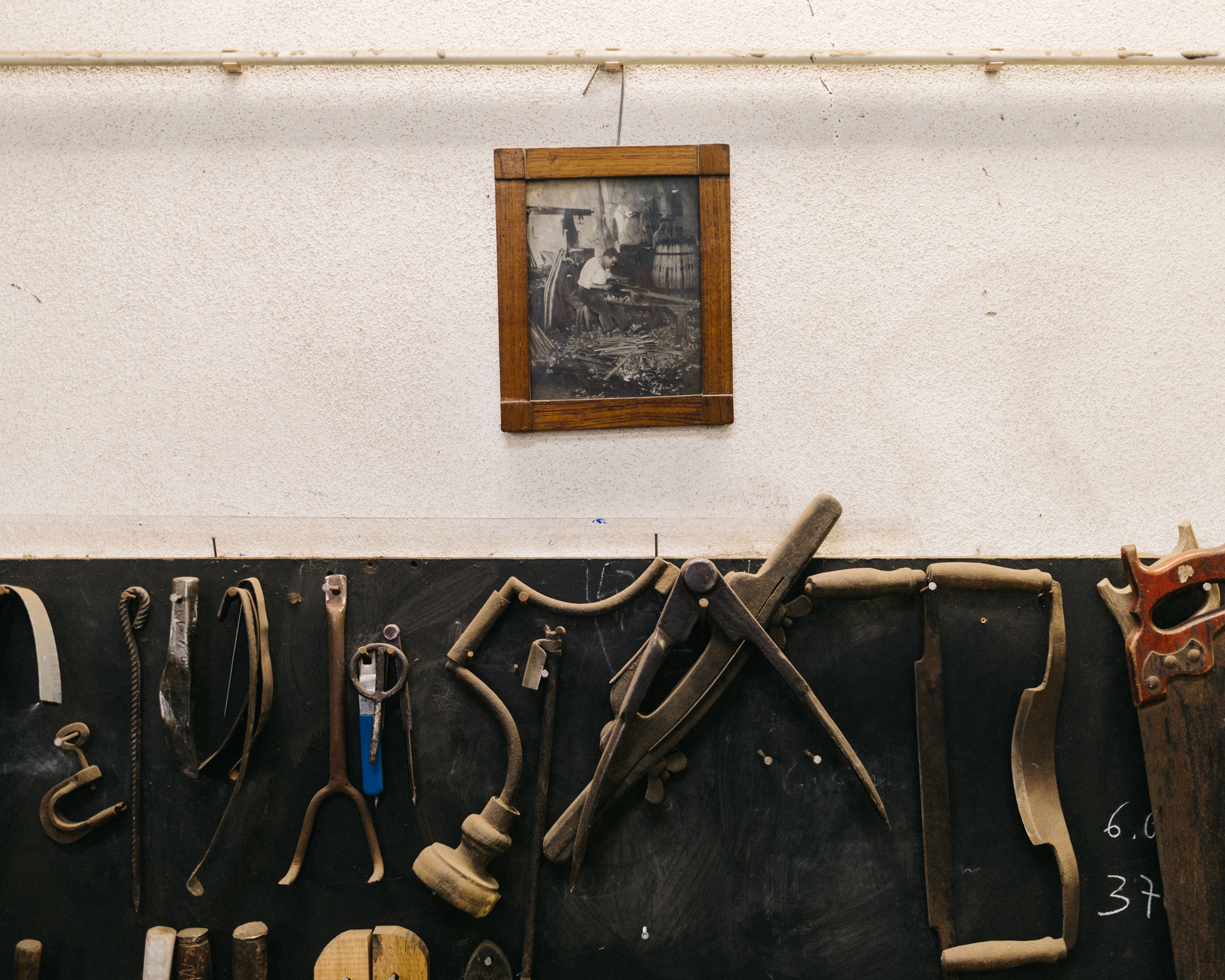
Parede da oficina de tanoaria da Taylor's © Renato Cruz Santos
We crossed the river to the other side to visit Taylor's cooperage workhouse. As soon as we entered, our nostrils were filled with the aroma of fermented grapes from the casks waiting to be repaired. Manuel and Ricardo are father and son, but there they treat each other as colleagues.
Manuel Jesus, 58, has been practising the art of cooperage for over half a century and has been with Taylor’s since 1998. He says that the first time he “decided to pick up a hammer and smash a mug to repair it” he was four years old. That was when his father, Joaquim, also a cooper, emigrated to France (the trip lasted only a few months) and a customer brought a mug to the workshop to be repaired. At the time, Manuel was unable to repair the mug, and he never forgot it, but when his father returned, he began working in the trade. He says that his father ‘made 100-litre barrels and when he got to the final part, which always involves tightening some hoops, he put him to work hammering’.
‘At first, I thought it was fun, but then I wanted to run away, I wanted to play. I worked at home with my father until I was 20, then I went to a cooperage and then I came here,’ he sums up, while hitting the top of a barrel with a mallet. ‘I can do this with my eyes closed,’ he says, laughing, and explains that the goal ‘is to test if it's tight enough.’ If it makes a ‘choco’ sound, it means it needs to be tightened. Here, it's not enough to be skilled with your hands, you also need to have a good ear.
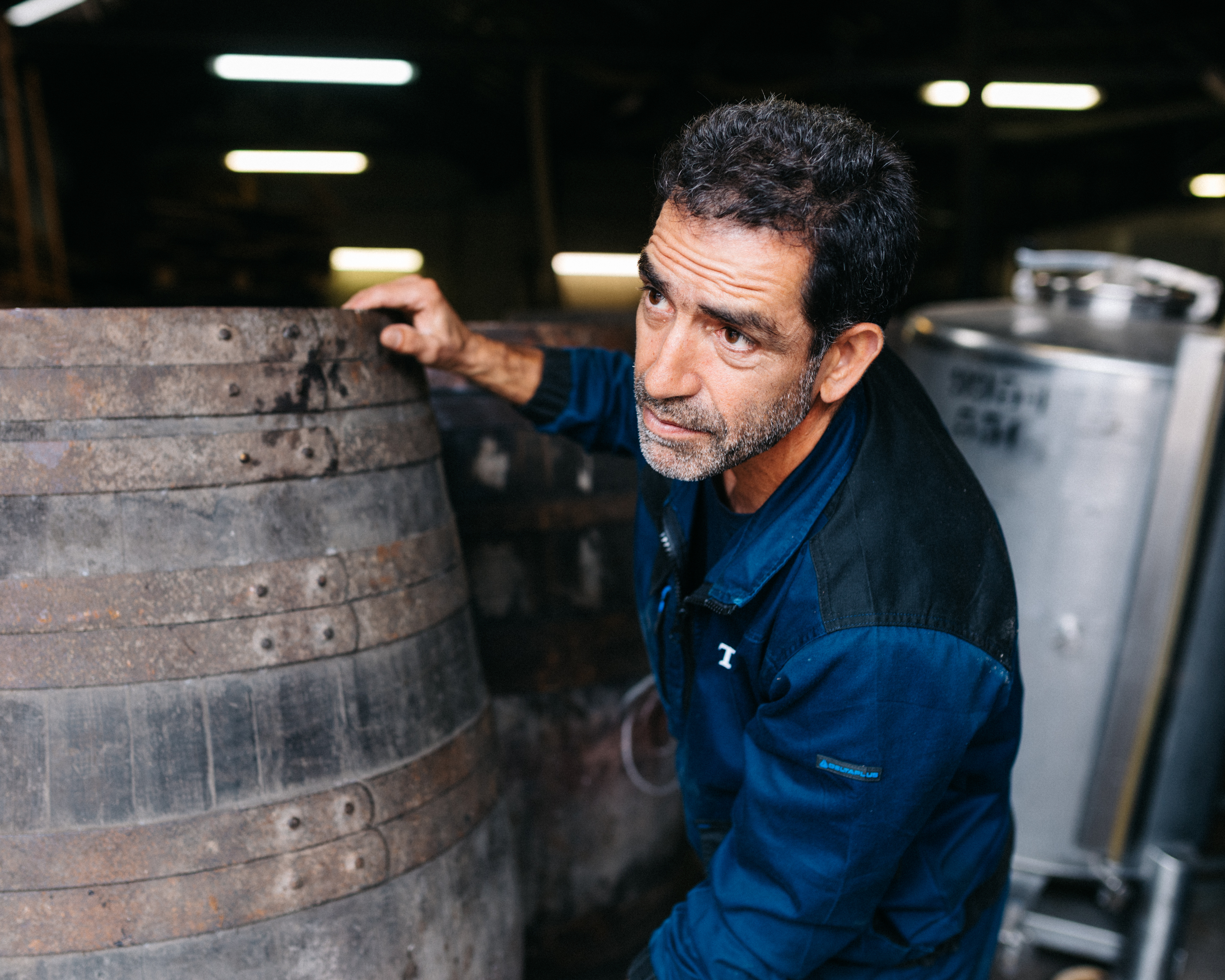
Manuel Jesus © Renato Cruz Santos
When ‘the wine gets angry’, Manuel uses a piece of greaseproof paper to stop leaks.
The barrels we see in the workhouse came from the Port Wine cellars in São João da Pesqueira. Many of them are marked with a white ‘O’ because the staves (wooden slats) that make them up have problems. Coopers usually walk through the cellar corridors, equipped with a torch, a knife and tracing paper, inspecting the batches, ‘to stop the barrels’. Pieces that cannot be repaired on site are marked and taken to the workshop where the hoops are removed with a mallet, and the staves are examined one by one.
‘The cooper's job is to test the barrel and check for any problems; we open the barrel and check each stave, replacing the damaged ones. Some problems can be detected from the outside, others only from the inside; sometimes they are more damaged than we thought,’ explains Manuel.
This experienced cooper says that ‘wine also gets angry’, referring to its fermentation, which causes it to expand inside the barrel, putting it under pressure and ‘causing it to give way in the areas where it is most fragile’. It is in these situations that Manuel springs into action to provide a kind of first aid for the barrels, where ‘all he needs is a knife and a piece of greaseproof paper to “save” the wine.’
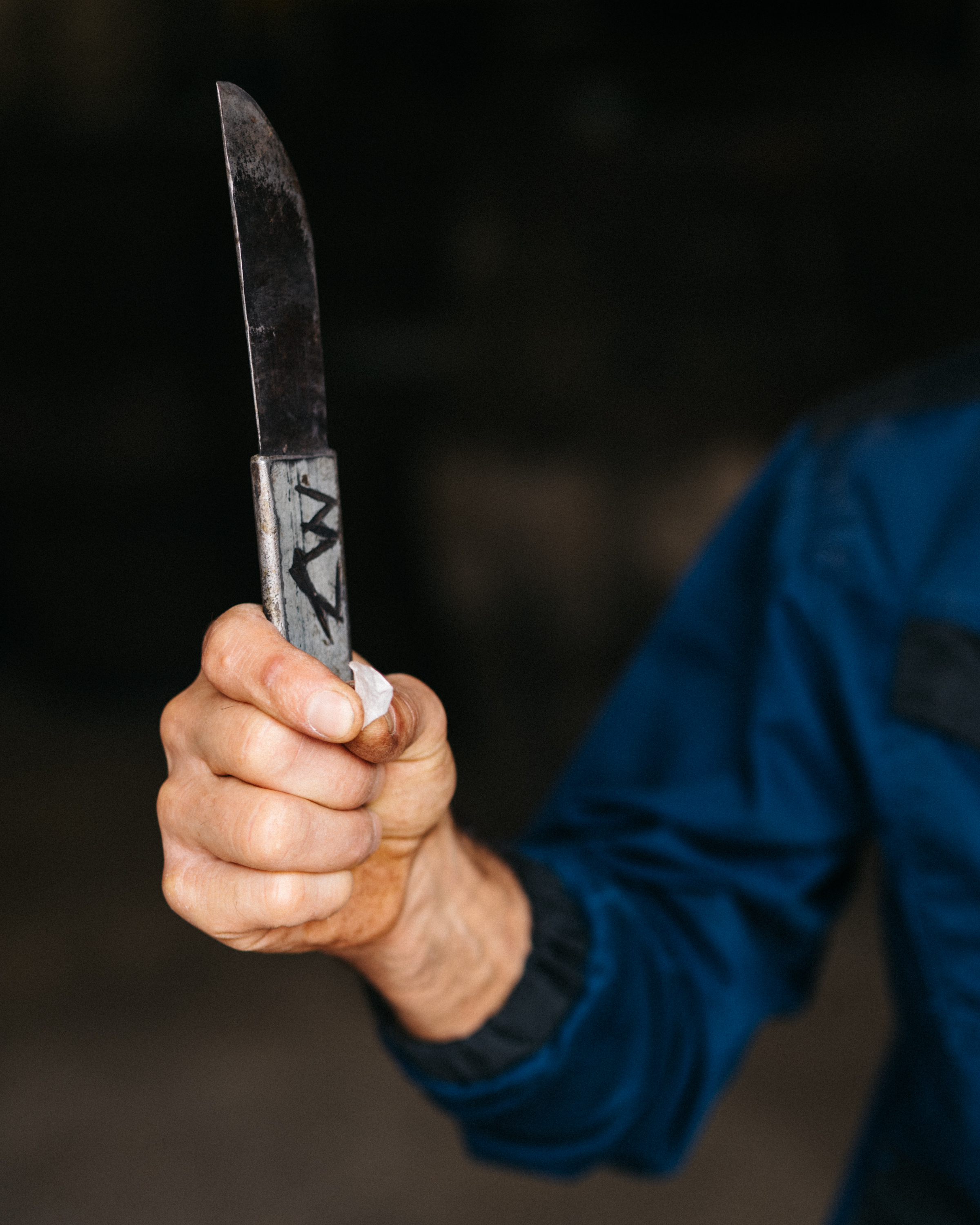
A faca e o papel vegetal que Manuel utiliza para estancar fugas das pipas © Renato Cruz Santos
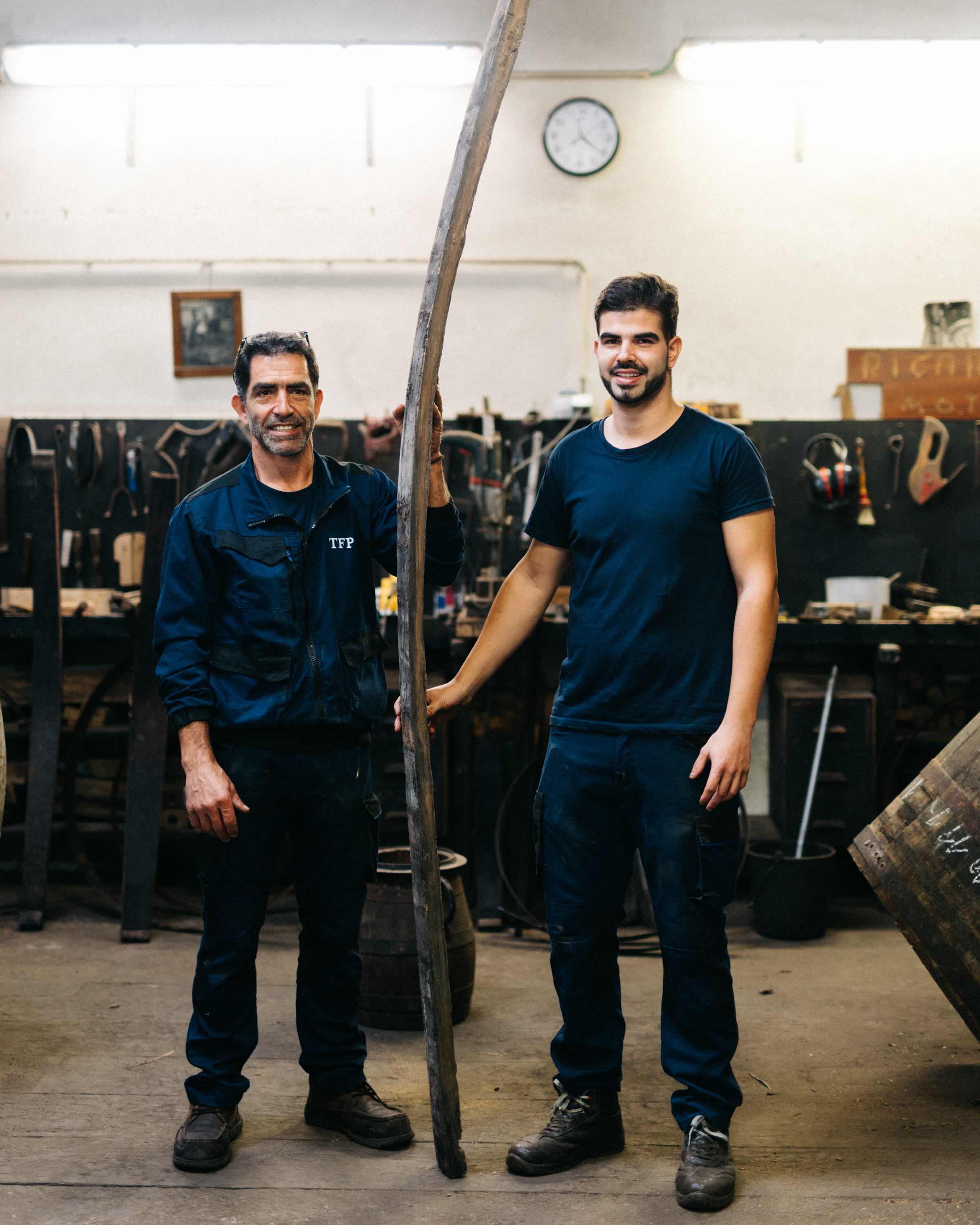
Manuel e Ricardo Jesus com uma aduela © Renato Cruz Santos
Although there have been developments in some of the tools and machinery used (‘if the new ones worked with the old tools, they would give up,’ Manuel assures us), cooperage remains essentially a craft. It is a profession that requires sensitivity, time and patience. Take Ricardo Jesus, 28, Manuel's son, who started working in this sector at the age of 19 and is one of the youngest coopers in the country. His father, he says, was his ‘main teacher’. "The art of cooperage is not like other arts; you don't learn [everything] in two or three years. It takes longer. Because the basis of everything is the eye; there is no tape measure. We don't want a tape measure – only if we're working with large vats. Small things are all done by eye, which is why it's much more difficult."
Ricardo recalls that, ‘at 14, this wasn't what I wanted at all.’ "I saw my grandfather and my father at home; sometimes I would accompany them to work on Saturdays. I was studying; I got into refereeing, but then I wanted to stop and the opportunity arose to come here to assemble and disassemble [barrels]. Then I started to enjoy it. And, over time, I became more interested – in Port wine, too," he says.
The young man regrets that his profession remains unknown and is therefore delighted with the report in Agenda Porto. "It's very rare for people to know what a cooper is, nor does it arouse much interest. But opening a bottle of Port wine does spark interest! So, whenever I can, I let people know what I do, what my work consists of, and I also take people to the Port wine cellars and the Douro.”
Ricardo still sees himself as an apprentice cooper and says that what he likes most is being able to ‘work with wood’. He also finds it ‘fascinating to open the barrels and smell the Port wine, which is over 100 years old’.
He says he learned that it takes between 30 and 35 staves to make a barrel, because when he takes them apart, he marks them all. ‘It's still a little difficult for me if the staves come loose and the barrel falls apart; if they are marked, I know how to put them back together, like a jigsaw puzzle.’
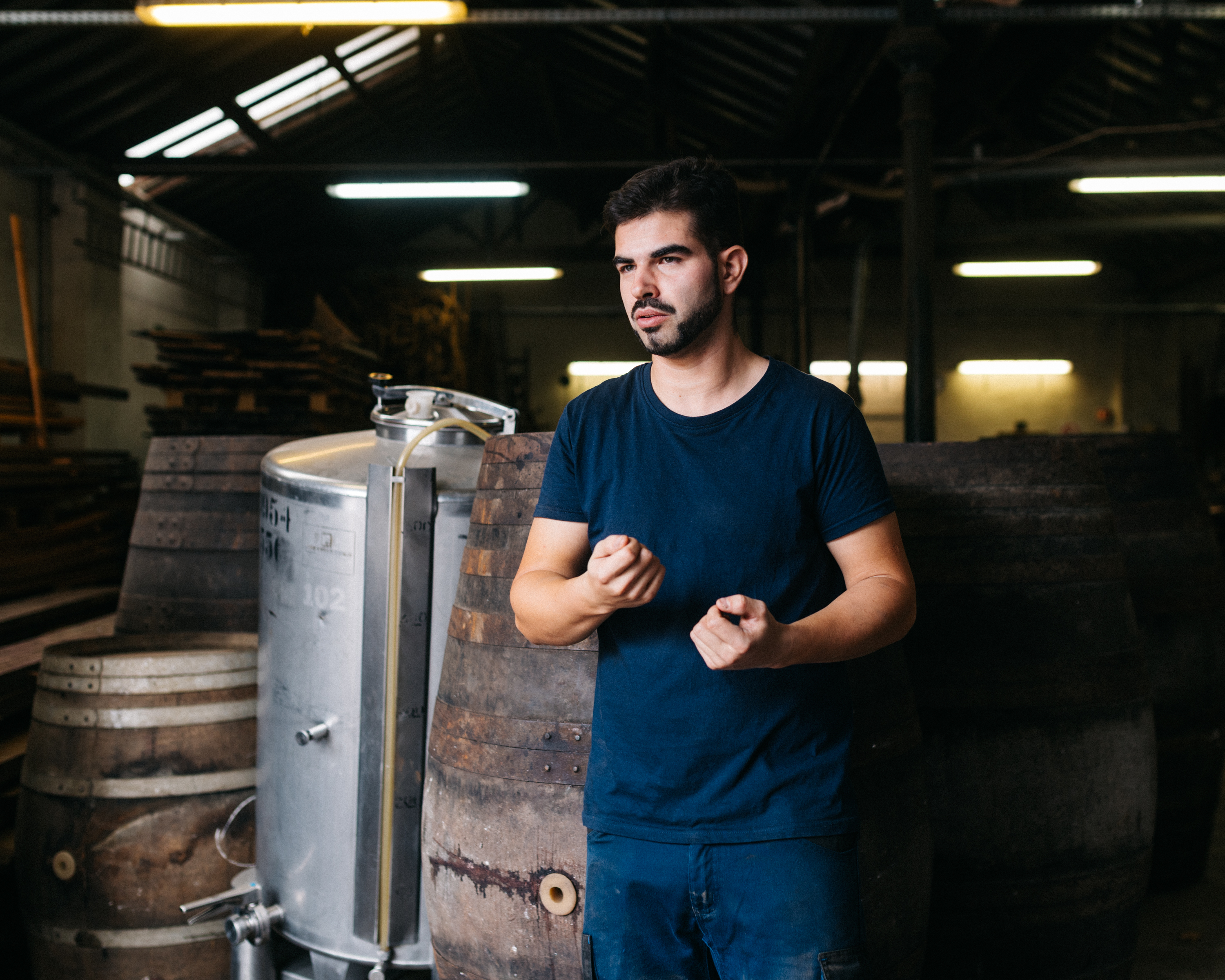
Ricardo Jesus © Renato Cruz Santos
Although there are few young people in the sector, he is certain that cooperage will not disappear. ‘This art of repairing barrels will not disappear, because there will always be a need for coopers in the Port wine cellars.’ He admits, however, that ‘young people of his generation don't like it because it's very dirty, very manual work and requires a lot of time [to learn] and concentration’. He believes that the future of the profession will depend on more attractive salaries. As for himself, he guarantees that ‘the passion will continue’ and that he will continue to learn. Because the art of cooperage is like Port wine: it gets better with time.
Glossary
While talking to Manuel and Ricardo, we noted down several terms and words used in this profession. Here is a kind of cooperage glossary:
Baixete: structure that serves as a rest for the barrel;
Chanfrar: to turn the hoop;
Encavilhar: to join the wood;
Enxó: tool for removing the staves;
Gato: cooper's tool for bending the vessels; iron piece used to straighten the staves.
Each arch that makes up a hull has a different name. They are: head, jabre, waist, straw tail, overbojo and bulge.
Note: straw (reed) is used to better seal the arch called straw tail; it is so called precisely because it is the arch where the straw ends.
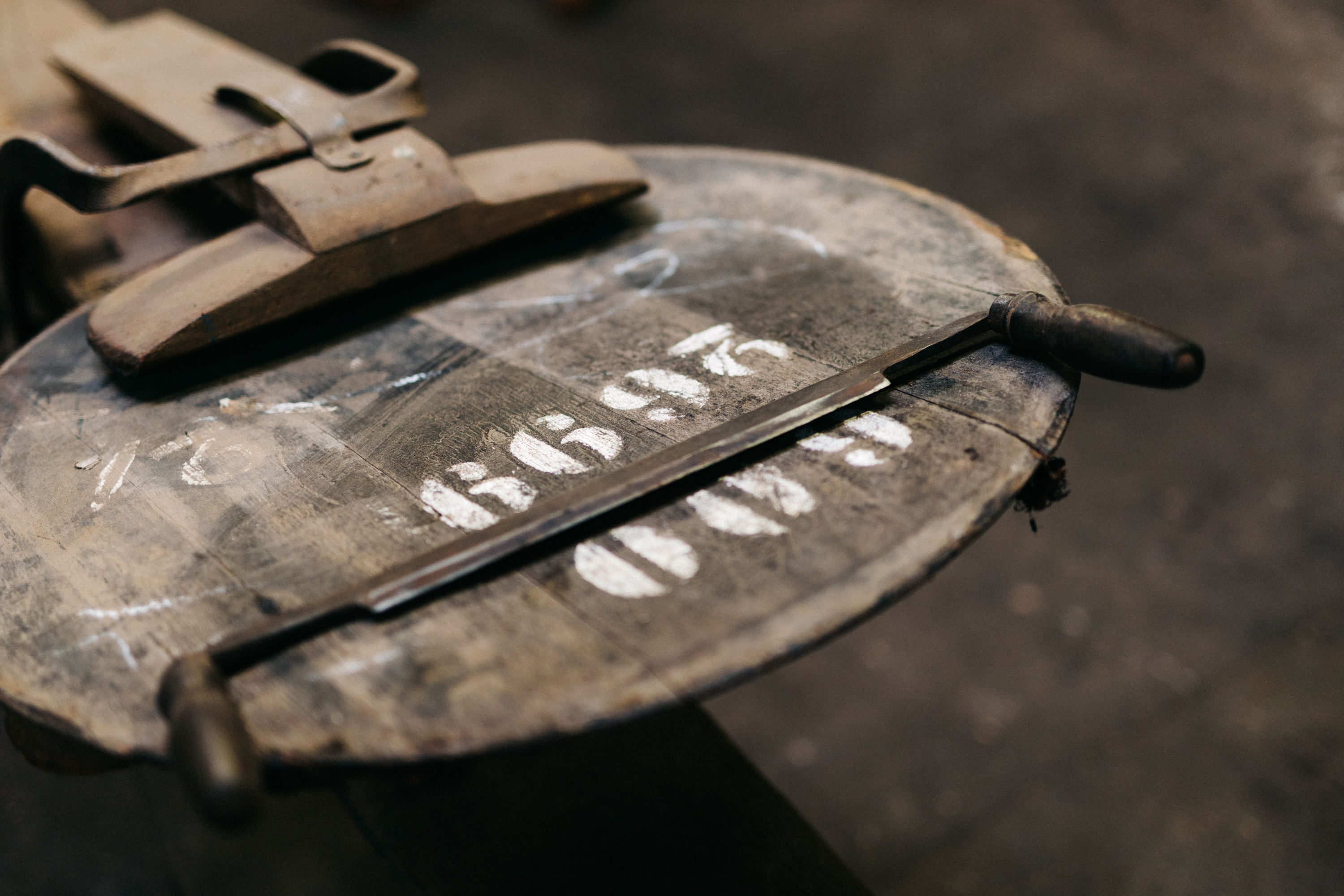
© Renato Cruz Santos
Share
FB
X
WA
LINK
Relacionados


